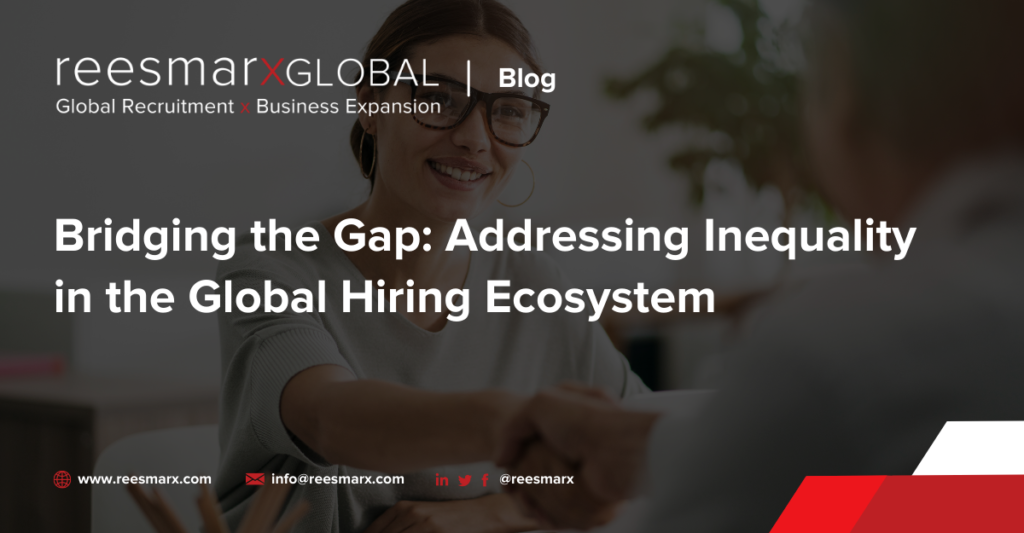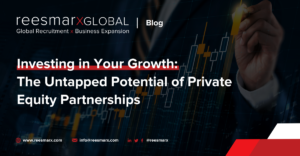One would assume that meritocracy rules the job market in a world that prides itself on globalization and technological advancements. However, this is not the case in 2023, as meritocracy is still a utopia. Despite significant progress, the global hiring ecosystem is still plagued with inequalities. The issue is multi-faceted and includes gender, race, socio-economic background, age, and geographical location, all contributing to a complex and pressing problem. In this article, we will delve into the existing inequalities in global hiring, supported by staggering statistics, and explore ways to bridge the gap.
The Quantifiable Inequalities: A Statistical Lens
Gender Gap: According to the World Economic Forum’s Global Gender Gap Report 2021, the gender gap in economic participation and opportunity currently stands at 58.8% closed worldwide. This means women are still underrepresented in the workforce, receive lower pay, and have fewer advancement opportunities. For example, in the United States, women make only 82 cents for every dollar men make.
Racial and Ethnic Inequalities: A study by the University of California, Berkeley found that Black job applicants were 2.5 times less likely to be called back for an interview than white applicants with identical resumes. This is an alarming sign of how racial bias infiltrates the hiring process.
LGBTQ+ Discrimination: A study by the Williams Institute found that transgender people are twice as likely to be unemployed as cisgender people.
Ageism: A study by AARP found that people over 50 are 40% less likely to be hired than younger workers.
Geographic Disparities: According to the United Nations, only 7% of people in the least developed countries have internet access, compared to 87% in developed countries. This significantly reduces their opportunities for remote job placements, limiting them to local options that might be scarce or underpaid.
Disability Discrimination: A study by the World Bank found that people with disabilities are 50% less likely to be employed than people without disabilities.

Systemic Barriers to Equal Opportunity
In addition to these overt forms of discrimination, several systemic barriers make it difficult for people from marginalized groups to get hired. These include:
Unconscious Bias: Although overt discrimination has reduced over the years, unconscious bias continues to plague the hiring process. Whether it’s favoring a candidate who graduated from a prestigious institution or subconsciously giving preference to a candidate who looks like they ‘fit in,’ these biases perpetuate inequality.
Credential Inflation: The increasing demand for more degrees, certifications, and qualifications affects candidates who cannot afford the spiraling costs of higher education. A college degree, once a unique achievement, has now become the baseline requirement for even entry-level jobs. For example, a study by the Brookings Institution found that the cost of a college education has increased by over 200% since 1985.
Networking Gap: A 2017 LinkedIn report showed that a staggering 85% of jobs are filled through networking. This immediately disadvantages those without such connections, as they miss out on these ‘hidden’ opportunities.
Lack of Access to Technology: In many parts of the world, people do not have access to the internet or other technologies essential for job searching and applying. This puts them at a significant disadvantage in the hiring process.

Strategies for Bridging the Gap
The good news is that several strategies can be used to bridge the gap and create a more equitable hiring landscape. These include:
Technology as an Equalizer: Emerging technologies offer a glimmer of hope. Blind hiring platforms like Applied and GapJumpers focus on skill-based assessments, rather than resumes, to evaluate candidates. AI-driven tests provided by companies like Pymetrics can measure cognitive and emotional abilities in an unbiased manner.
Policy Overhaul: Governmental intervention is essential to implement and monitor equal hiring practices. Regulations could require companies to publish diversity statistics, and penalties could be enacted for failing to meet specific diversity targets.
Building an Inclusive Culture: Diversity training and workshops can go a long way in creating an inclusive work environment. Companies should also shift towards holistic assessments considering soft skills, life experiences, and formal qualifications.
Providing Access to Education and Training: Governments and organizations can provide financial assistance to help people afford the cost of education and training. They can also work to make these opportunities more accessible to people from marginalized groups.
Conclusion
The inequalities present in the global hiring ecosystem are more than just ‘gaps.’ They are chasms that require significant effort to bridge. The good news is that solutions exist. By leveraging technology, advocating for robust governmental policies, and committing to a culture of inclusivity, we can make strides toward a more equitable hiring landscape.
Contact reesmarxGLOBAL Today
reesmarxGLOBAL is a leading global recruitment and executive search agency helping businesses find top talent, even during economic downturns. We have a proven track record of success and are committed to helping our clients achieve their hiring goals.
Contact us today to learn how we can help you adapt your recruitment strategies during economic uncertainties.






